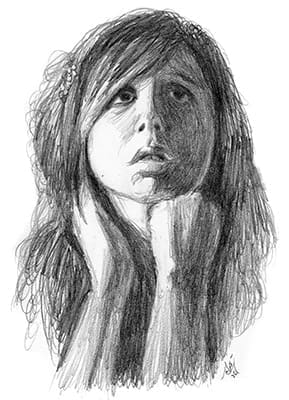Meeting Jesus in the garden
By LORRAINE V. MURRAY, Commentary | Published April 18, 2019
For me, the most poignant moments of the day now called Easter are found in the story of Mary Magdalene. I believe her astonishing encounter with the risen Christ in St. John’s Gospel reveals what is in store for faithful followers of the Lord.
On her feast day, there is a reading from a lovely book in the Old Testament, the Song of Songs: “I will rise and will go about the city; in the streets and the broad ways I will seek him whom my soul loves.” And then: “I found him, Whom my soul loves; I held him, and I will not let him go.”
I always imagine Mary Magdalene being awake most of the Sabbath night, eager for the dawn. After all, Jesus was her beloved master, who changed her life forever when he cast the demons from her soul—and she is terribly shaken by his death.
As the first bird utters a tentative note, she dresses quickly and rushes to Christ’s tomb. In astonishment, she sees that the stone has been moved from the entrance—and concludes that his body has been taken away.
When she runs to tell Peter and John about her discovery, they race to the tomb to confirm her story. When they see the burial cloths lying on the ground in the tomb, they decide someone has indeed stolen the Lord’s body—and they return home.
 Mary Magdalene remains, however, still crying—and when she looks into the tomb, she sees two angels, who ask her why she’s weeping. “Because they have taken away my Lord, and I don’t know where they have laid him.”
Mary Magdalene remains, however, still crying—and when she looks into the tomb, she sees two angels, who ask her why she’s weeping. “Because they have taken away my Lord, and I don’t know where they have laid him.”
Then comes one of the most stunning moments in the Gospels, when she turns around and sees a man standing there, and assumes he’s the gardener. What was he doing? We don’t know, but some have suggested pruning a grape vine or tending to a fig tree.
This “gardener” asks about her tears, although he knows the answer. In reply, she asks him to tell her where the body is.
Jesus once said that the sheep recognize the shepherd’s voice, and will only follow that sound.
Now the Good Shepherd says one word, “Mary”—and she immediately knows who he is.
And how perfect that she assumed he was the gardener, given that the Lord created Adam and Eve in a garden and suffered in a garden.
In response, she utters one word, “Rabboni!”—and we can imagine her reaching toward Jesus to embrace him. But he tells her she must let him go—and thousands of words have been written about the meaning of this interaction.
Perhaps, quite simply, he is saying that a grieving person mustn’t hold on too tightly to the beloved dead, but instead accept reality and let them go to the Father.
Mary Magdalene, the faithful one who remained at the tomb, is the first person to meet the risen Christ and then tell the amazing news to the disciples: “I have seen the Lord.”
Let’s hope that one day we too will see the Lord, the divine gardener, who will call our names with such love. Let’s pray that the love we show him in our earthly lives will flourish and bloom in heaven.
And on Easter Sunday, let us promise the Lord we will always seek him—and we will always rise early and rush to meet the one whom our soul loves.
Artwork by Jef Murray. Lorraine’s email address is lorrainevmurray@yahoo.com